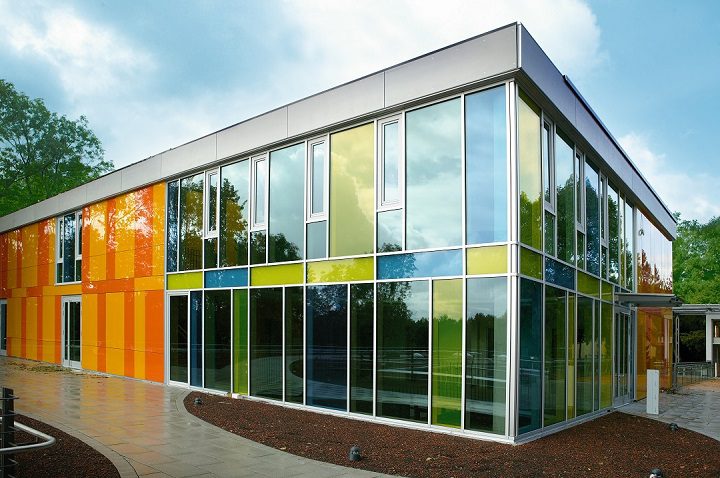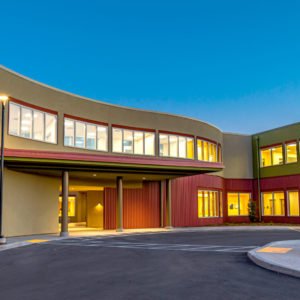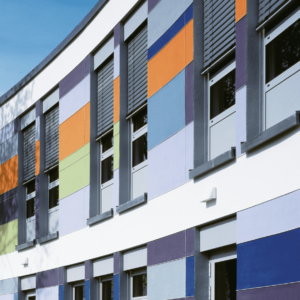It’s no secret that a lot of energy can be consumed in commercial buildings through inefficient glass exteriors. But times have changed. New technologies have allowed the aesthetically appealing building material to reach new heights in energy efficiency.

The colorful facades of the Conductive Education Centre in Munich beautifully incorporate a StoVentec Glass Rainscreen system. The translucent surfaces shimmer in green and blue, while the opaque parts shine in yellow, orange, and red.
On the simplest scale, existing windows can be treated with films, which are applied to existing glass surfaces. Heat is reflected back into the building in the winter to reduce heating costs. Window films can also reduce the amount of solar heat gain, reducing cooling loads for buildings in warmer climates.
Curtain walls improve thermal efficiency
For buildings that have entirely glass facades, curtain walls – a non-structural frame that allows for customization – are designed to keep out moisture and can have energy efficient properties. Per Motley Fool, “a properly glazed curtain wall will improve the thermal efficiency of a building and will cut down on operating costs. In addition, exterior glazed systems work by cutting down on the amount of UV light that can penetrate into the building’s interior.”
One cost effective way to achieve better energy efficiency in glass facades is to reduce the area of visual glass fenestrations. New opaque glass assemblies that provide air and moisture barriers and continuous exterior insulation can be combined with the visual glass to create an all-glass aesthetic, but with far higher energy efficiency at a lower cost than using coated or double and triple glazed wall assemblies. The reduced fenestration area will also reduce occupant comfort issues that are typically mitigated by using additional shading techniques or interior coverings, which can defeat the original intent of a curtain wall glass structure.
Textured and colored glass options
While the benefits of natural daylight to building occupants are numerous, in cases where lighting can be overly abundant, textured and colored glass options are available. This type of cladding also offers shading and enhances privacy. Additional benefits of opaque glass wall assemblies included increased durability, easy maintenance, enhanced acoustical performance, and a wide variety of color and shape options, including back printed custom images.


